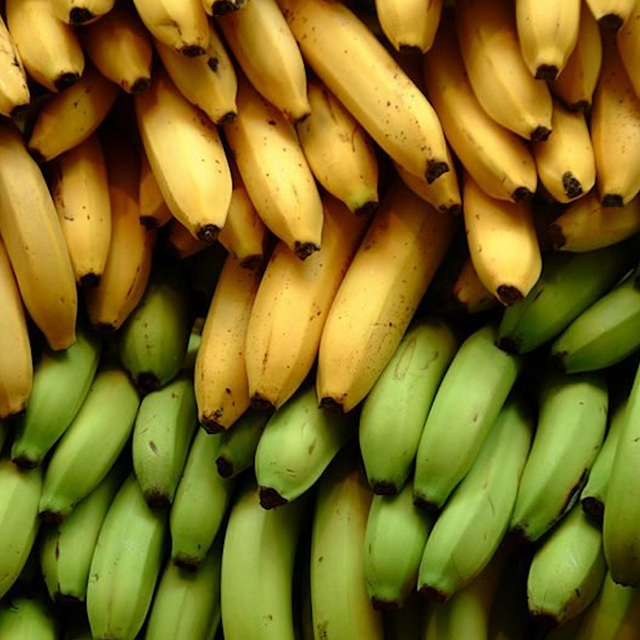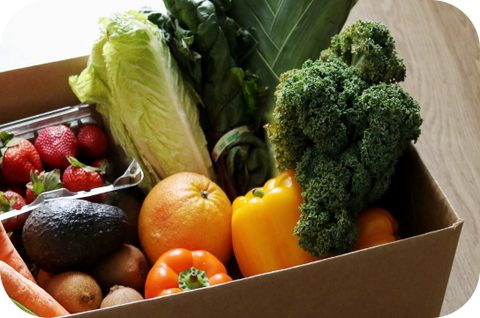

We’re all familiar with the colour change in bananas—from green to yellow to spotty. An estimated 50 M tonnes of food waste comes from throwing out browning bananas (1). So, what’s the science behind ripening, and how can we control ripening to reduce food waste?
The Science Behind Ripening
- HARVEST: Bananas are grown year-round in tropical and subtropical regions of the world (2). They are harvested while still green and refrigerated in transit to prevent ripening (2).
- RIPENING TRIGGER: Green bananas are placed in a ventilated room at 70-90% humidity and 15-21°C: the conditions at which they will ripen (2). Ethylene gas (a natural ripening hormone) is pumped into the room, and after 1 day, ethylene gas is removed (2). Bananas are classified as climacteric fruits, such that a burst of ethylene (internally produced or environmental exposure) will trigger ripening (3). This condition causes bananas to produce ethylene until a peak concentration, during which the fruit’s metabolism changes (3, 4).
- TURNING YELLOW: As chlorophyll (green pigment) breaks down and carotenoids (yellow pigment) are created, bananas will slowly transition from green to a light yellow colour (3). This is the state of bananas sold to consumers at stores.
- BROWN SPOTS: Bananas will continue to ripen, deepen in yellow and eventually become spotted as oxygen reacts with chemicals in the peel (1, 4). Spotted bananas are NOT spoiled; this is an indicator of ripeness. The starch of the fruit breaks down during ripening, which corresponds to an increase in the amount of simple sugars that taste sweet (3).
Throw Away Less Bananas: 3 Tips to Manage Ripening
-
Keep bananas away from other fruits (5)
Fruits that release ethylene gas, such as apples and kiwis, will cause bananas to ripen extra fast. Don’t store bananas in a fruit bowl; keep them separately to prevent bruising, too!
-
Wrap banana stems in plastic wrap (5)
A significant amount of ethylene gas is released from the stem of the banana bunch. Wrapping the stems would slow down the ripening process.
-
Freeze excess ripe bananas
Peel & store banana chunks in an airtight container in the freezer. Use them in smoothies, or defrost at room temperature for banana bread, cookies, and more!
Sources:
- (1) https://www.openaccessgovernment.org/browning-banana-food-waste-household/135392/
- (2) https://www.nationalgeographic.com/environment/article/food-journeys-graphic
- (3) https://kids.frontiersin.org/articles/10.3389/frym.2018.00016#:~:text=During ripening%2C there is an,in bananas as they ripen
- (4) https://academic.oup.com/plphys/article/169/4/2380/6113983
- (5) https://www.today.com/food/best-tips-keep-bananas-turning-brown-ripening-t150266
